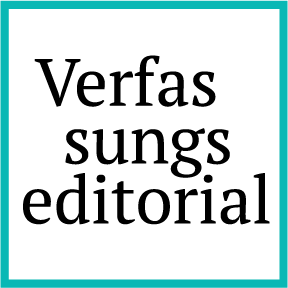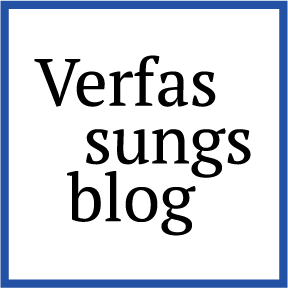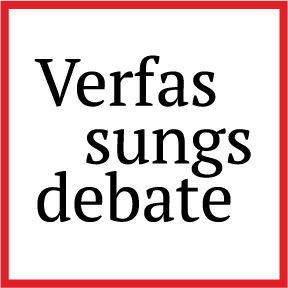Avian Flu Shows the Need for Transformative Meat Governance
Introduction
The Defund Meat conference at the Max Planck Institute that prompted this series of essays “moved the meat question from the margins into the spotlight of the ongoing debates on One Health, sustainability, climate change, food security, and public health”. Intensive animal production poses large-scale threats to public health. Raising, killing, and consuming animals and animal products carries significant risks of zoonotic disease. Many of the negative effects of animal agriculture are becoming well known, but the zoonotic disease risks are not yet fully explored.
This contribution argues that we must add zoonotic disease risk to the list of reasons for transformative meat governance. Serious zoonotic risks are inherent in intensive animal production and also in non-intensive animal production. Production scale does not make one type more or less dangerous or immune. Zoonotic disease risk is one compelling justification, among many other reasons discussed in the other contributions to this debate, for transformative meat governance. The issues are urgent, and the time is now. We cannot wait for the next major crisis, the next pandemic, or the next headline news of another animal cruelty exposé in the animal agriculture industry.
The focus of this contribution is on one kind of zoonotic disease: avian influenza, and specifically virus type A subtype H5N11), or A(H5N1). In domesticated chickens, this type of avian influenza is “highly pathogenic”, meaning that the symptoms are severe and in fact fatal for a large percentage of these animals. Thus, avian influenza type A subtype H5N1 is considered highly pathogenic avian influenza (HPAI).2) Scientists first identified that HPAI could cause human illness in 1997. Prior to that time, birds were thought to be the only animals who could be infected. Human infection and illness changed HPAI from a literal “bird flu” to an influenza that could cause a human pandemic.
HPAI and its Transmission
The host species of HPAI is wild birds – particularly wild aquatic birds, but the impact and significance of HPAI – including the possibility of becoming a human pandemic – is directly connected to humans raising, using, and killing chickens and other avian species for eggs and for meat. As an infographic from the U.S. Centers for Disease Control (CDC) shows, the mechanisms for transmission of HPAI are complex and multi-directional. HPAI is usually found in their gastro-intestinal and respiratory tracts, while not harming these host birds. However, when HPAI is secreted through their mouths and noses and through their feces, it can remain alive and then infect other species, for whom it can be very harmful. For example, at 20 degrees Celsius, HPAI can survive as long as 21 days in water. Moreover, many species of these wild birds are migratory, and they can shed the virus over the long migratory paths. HPAI has been documented as spreading from wild birds directly to humans, from wild birds to domesticated chickens and other domesticated birds used for food, and from wild birds to cows.
There are further permutations of spread, including from cows to humans, cows to cats, and cows to domesticated chickens and other domesticated birds used for food to humans. After the CDC created this infographic, additional species of mammals have been infected, including polar bears and the California condor, which is endangered, and numerous other species: “ferrets, mink, otters, badgers, skunks, opossums, critically endangered Amur leopards and tigers, mountain lions, marten and fisher, European polecats, lynx, bobcats, domestic cats, dogs, red foxes, coyotes, raccoons, raccoon dogs, bears of all kinds, seals of all kinds, domestic pigs, sea lions, various porpoises, bottlenose dolphins, short-beaked common dolphins, white-sided dolphins, Chilean dolphins, and others.” The count of bird species infected is more than 500.
On July 28, 2025, the FAO, WHO, and WOAH jointly assessed the public health risk of HPAI: “Transmission between animals continues to occur and, to date, a growing yet still limited number of human infections are being reported. Although additional human infections associated with exposure to infected animals or contaminated environments are expected to occur, the overall public health impact of such infections at a global level, at the present time, is considered minor. The assessment could change if and when additional epidemiological or virological information becomes available”. Given the recent history of HPAI and its pandemic potential, it is crucial to keep HPAI on the global radar. The WHO’s analysis, reported in the New England Journal of Medicine, shows that “As of November 1, 2024, more than 900 human cases in 24 countries had been reported globally since November 2003, with a cumulative case fatality of approximately 50%”.
Animal Agriculture Intensifies Spread and Impact of HPAI
Let’s focus now on the role of domesticated chickens and other domesticated birds used for food. Approximately 75 billion chickens are slaughtered every year worldwide for consumption of their flesh. At the end of 2024, reports indicated that HPAI caused the death of more than 300 million birds. In the U.S., as of June 13, 2025, the last day that the CDC reported cumulative figures, 174,804,048 cases had been “detected in U.S. wild aquatic birds, commercial poultry and backyard or hobbyist flocks beginning in January 2022.” These cases occurred in all fifty states and Puerto Rico and occurred in 1,709 separate “flocks”, of which 788 were commercial and 921 were backyard flocks. Since the size of a commercial flock is significantly larger than a backyard flock, we can deduce that most infected animals were in commercial facilities where hundreds of thousands or millions of chickens or other domesticated animals raised for food or eggs are kept. For example, an outbreak in Maricopa County, Arizona, on May 30, 2025, according to the United States Department of Agriculture (USDA), involved 1,354,200 hens at a “commercial table egg layer” facility.
The wide-scale presence of HPAI at industrial facilities across the U.S. is a compelling, yet overlooked, reason why we need transformative meat governance. Industrial farms, including chickens raised for meat and hens kept for eggs, claim to have high biosecurity (and certainly higher biosecurity than “backyard breeders” of chickens). And for the sake of argument, let us deem this claim to be true, and even say that they have very high biosecurity measures. For example, United Egg Producers reports that “some egg farms have added designated changing areas, where personnel ‘shower in’ and change into designated coveralls and protective gear that stay at the farm. When their day’s work is done, they ‘shower out, change back into their original clothes, and leave the designated clothing at the farm’”. Frequent handwashing and footbaths for footwear are other biosecurity mechanisms. All these measures, and yet, 788 commercial facilities had HPAI outbreaks between January 2022 and June 2025. The conclusion is that very strong biosecurity measures cannot keep HPAI from infecting chickens in commercial facilities.
There are many reasons for this inability to stop the spread of HPAI, including the fact that the influenza can simply infiltrate even the most secure sites. HPAI can decimate an entire flock quickly, to the point that an entire flock is killed once the influenza virus is present. There are several explanations for this.
First, low genetic diversity allows disease to spread more quickly; high genetic diversity can act as a natural buffer to disease. To take chickens who are raised for meat as an example, most of the chickens are genetically identical due to the prevalence of one type. The company Aviagen, which operates internationally, sells Ross 308, Ross 308 AP, and Ross 708 chickens. The Ross 308 “is the world’s most popular broiler, providing integrated operations with the perfect balance of breeder, broiler and processing performance”. Genetic uniformity among hens is also the goal of commercial egg operations. Take the company Hi-Line and its hen “W-36” as an example: “The Hy-Line W-36 is the world’s most efficient egg layer with excellent livability. The Hy-Line W-36 lays dozens of top-quality, strong-shelled eggs with minimum feed consumption, making her the industry’s lowest-cost producer of eggs. With no equal in egg solid content, she’s the only choice for customers who process eggs. The dependable Hy-Line W-36 generates maximum profits for the egg producer.”
Second, the conditions that exist in industrial production facilities are precisely those that facilitate disease transmission. Animals crowded together in large numbers with poor ventilation, poor hygiene, and poor welfare means that disease moves quickly, especially among genetically similar animals. These conditions also lead to high levels of stress, which can undermine the health of animals’ immune systems and make them more susceptible to disease.
HPAI Adds Monetary Cost Burdens to Society
Industrial facilities – and other agricultural producers – receive subsidies from the U.S. government. The U.S. spends an estimated $38 billion to subsidize meat and dairy production. The U.S. Department of Agriculture (USDA) “administers programs that create domestic and international marketing opportunities for U.S. producers of food, fiber, and specialty crops” through its Agricultural Marketing Service (USDA-AMS). USDA also “pays for birds and eggs that must be destroyed” due to HPAI. As of the end of 2024, the U.S. spent $ 2.1 billion dollars in indemnification payments made to poultry and dairy producers to compensate them for losses sustained due to H5N1 and prevention measures.
The questions asked by governments and media tend to focus on how HPAI can be stopped once it is circulating among animals and once animals have infected humans. Even more intense questions focus on how HPAI can be prevented from circulating widely among humans and turning into a pandemic. These are important questions, but the focus on them to the exclusion of prevention-related efforts is misguided.
Conclusions
We must recognize and confront the fact that the industries that produce meat and other animal products are a major cause of zoonotic disease and HPAI in particular. They are a significant problem that must be addressed – and not a permanent state of affairs that we must spend time, money, and human and animal lives trying to prop up and save from their own inherent flaws. The first step is to view HPAI holistically, as this contribution has done, seeing it not as discrete facts and harms but as causal chains of events. When we take a hard and honest look, we see that the industries that use chickens – for meat or eggs – bear significant responsibility in the causal chain that leads to human deaths and a potential global pandemic.
Second, having recognized the dangers and harms of these industries, we must make this responsibility, and the facts that stand behind it, completely transparent. Piecing together the causal chains even for this contribution took dozens of hours; one might even think that the role of animal agriculture has been obscured so that consumers do not know, for example, that their tax dollars are compensating these industries for problems of their own making.
Third, we need lawmakers with enough fortitude to go beyond mere patchwork regulations of these animal industries to engage in true transformative meat governance. The industries we know today will look very different as a result of this transformation; that will be not only a positive development but an essential one.



